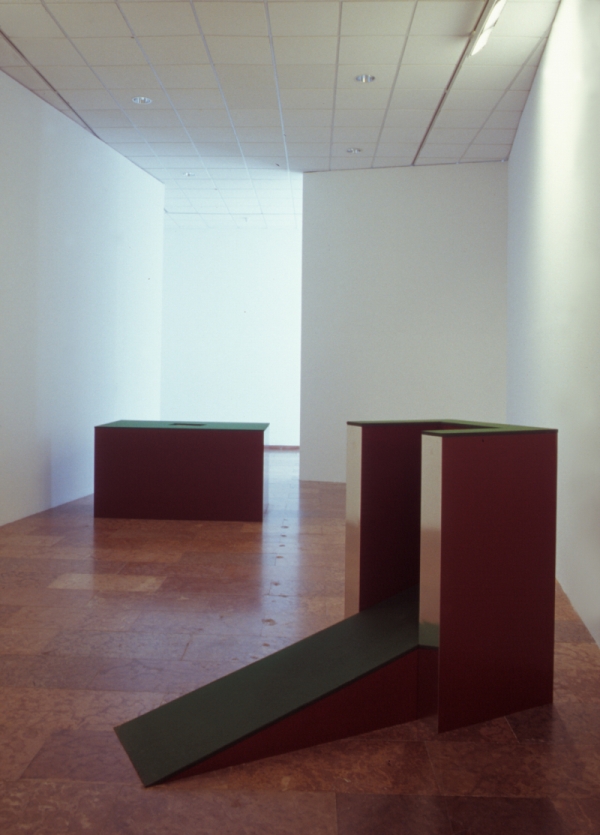As young as he is, Levente Bálványos has already established his career as an artist. He graduated from the Hungarian Academy of Fine Arts in 1999, where he had studied under sculptor György Jovánovics. Bálványos’ work bears the influence of classical avant-garde and constructivism. Up till recently, he created small-size sculptures and spatial compositions from cardboard or found pieces of wood, transforming these materials into sophisticated geometrical, architectonic elements. His work displays the same sensitivity and lyricism as was characteristic of the first practitioners of abstract art. He concerns himself with the relationship of symmetry and asymmetry, focussing on systems as well as their abandonment.
"Creating Space", the title chosen this year for the Ludwig Museum’s Project Room program, indicates that the invited artists will explore the notion of space and diverse possibilities of spatial formation in their works. The residency program makes it possible for the participating artists to conceive and realise ideas on the spot, enabling them to accomplish works in dimensions larger than the format of their earlier, small-sized pieces.
The title of Levente Bálványos’ exhibition, "One Room and a Half," simply refers to the fact that the artist has formed a room and a half out of the single space of the Project Room by building new walls within the space that are neither parallel nor perpendicular to the original walls. Within these rooms, two sculptures are displayed, as well as an object imitating a picture placed on the wall, also made on the venue. The sculptures are reminiscent of pieces of furniture: a chair and a table, strongly stylized, with unusual proportions, which lend these works a type of monumentality. Their surfaces of different colours are either painted, or coated with metal or textile. The combination of warm and cold, matte and polished surfaces brings about a sense of totality.
The wall-piece examines light and its reflections. The heavy metal plate becomes virtually weightless, spiritual as it were, in the cold light of the neon tubes.
The reshaped room appears to be even more oblong than originally, and the sculptures and the wall piece suggest a sense of sacredness.

